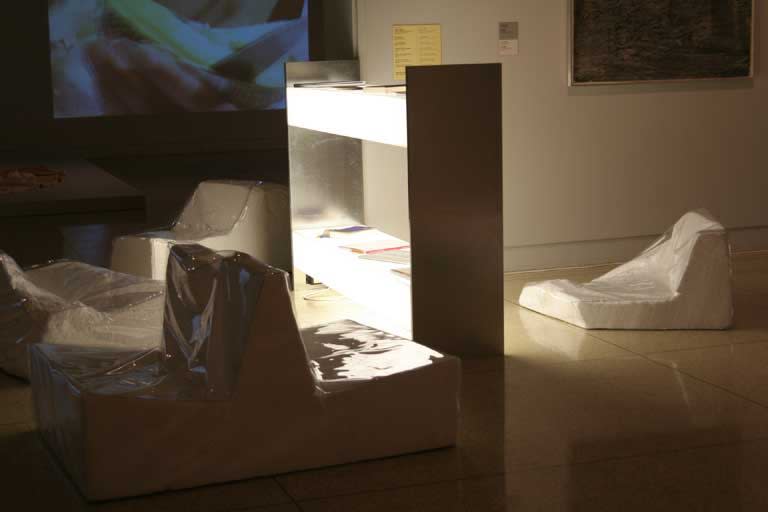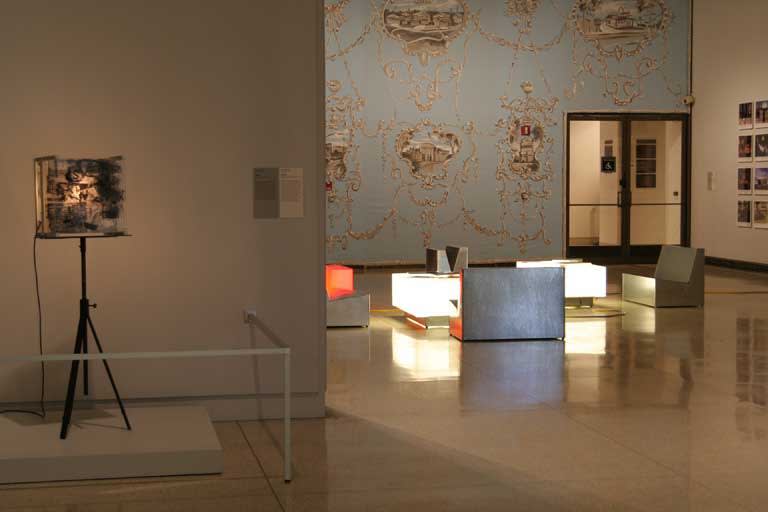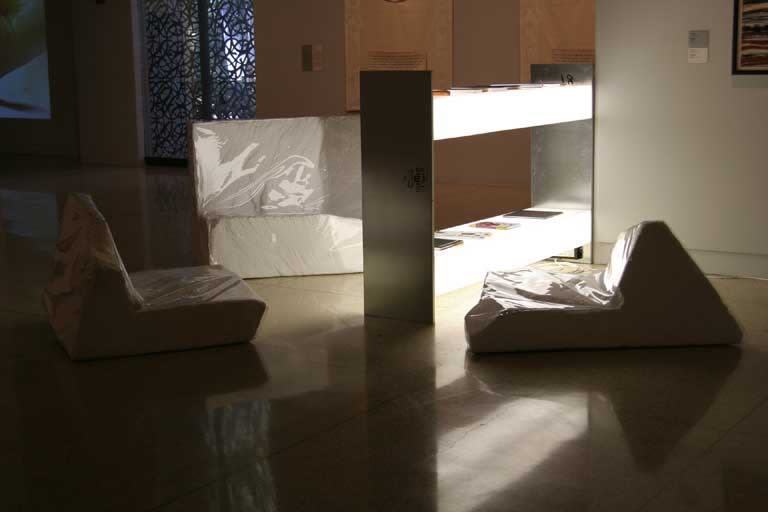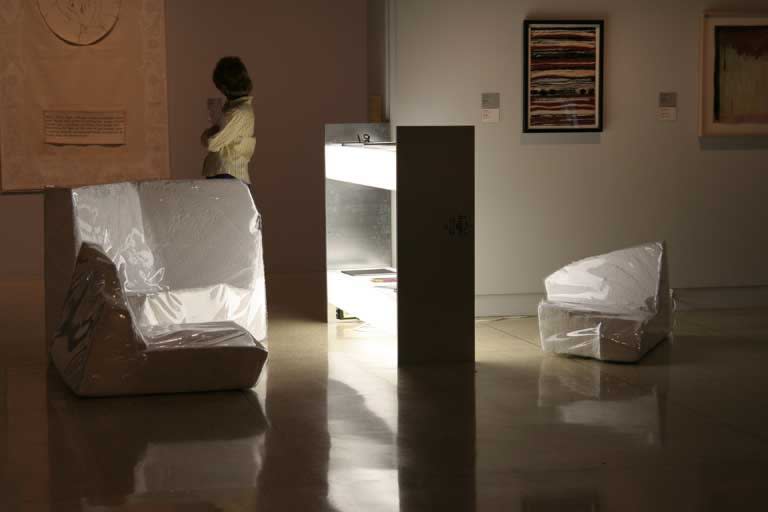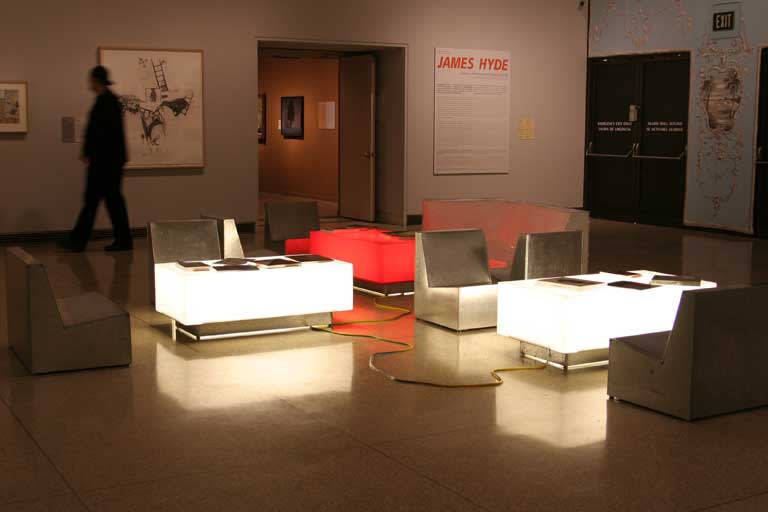Contemporary Links 4: James Hyde—Luminous Platforms and Relaxed Seating is a special project inserted into a pre-existing collection-based installation, Tracking and Tracing: Contemporary Acquisitions 2000-2005. Through the addition of seating, tables and a selection of books, Hyde’s project is a laboratory for reshaping the audience experience by changing the terms of engagement with the works on view.
James Hyde is known for his imaginative use of materials, such as pigment on over-sized pillows or tiny wooden blocks, wall hangings made from beach chair webbing and furniture-as-art of translucent plastics. Although much of his work appears to be about the perceptual condition of objects, Hyde is particularly interested in extending the terms of the experience of painting. He subtly explores the experience of vision and observation with a specific focus on the material basis of painting, resulting in approaches to art making that are imaginatively wide-ranging. Hyde thinks about the activity of painting in extended terms. “For me painting is neither an object or a practice, but is a habit of seeing…I’m interested in how furniture constructs the figure. This comes from painterly concerns. I’ve often been more interested in the pictorial qualities of the painting support than its surface. My furniture can be thought of as pictorial abstractions of a painting panel.”
For instance, Hyde has made frescos on Styrofoam and paintings in glass boxes that one may in some sense consider the successors to Early Renaissance fresco murals and stained glass windows. His minimal geometric furniture designs reference the twentieth century modern styles of Russian Suprematism and De Stijl, movements that questioned boundaries between art and the utilitarian object within operative formalism. He is also indebted to the Minimal artists of the 1960s and 1970s such as Donald Judd, Dan Flavin, and Scott Burton, who furthered the orthodoxy of modernism by turning the appearance of functionality into a mode for exploring a phenomenological relationship with the work of art, where use and non-use became less a criteria for distinguishing art from design, but a gauge of the commonality of the two. The art historian and philosopher Christine Buc-Glucksmann suggests, “It is not the transcendent infinity of Giotto’s frescoes, nor that other white, empty and cosmic infinity of Malevich, but multiple and varied infinities…which open onto a field of real and virtual forces, where painting is implicated. A topology, in sum, in its matter and means, which empties painting of its ontological substrata and of its traditional supporting structure—canvas and stretcher—in favor of its becoming multiple, materialized and abstract.”

